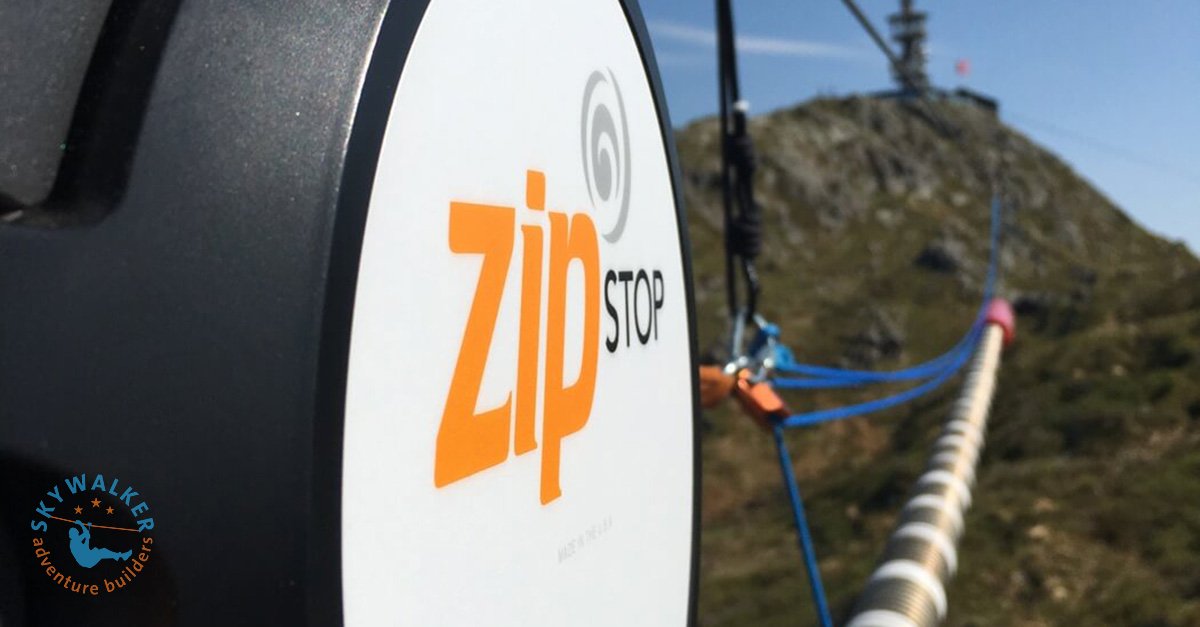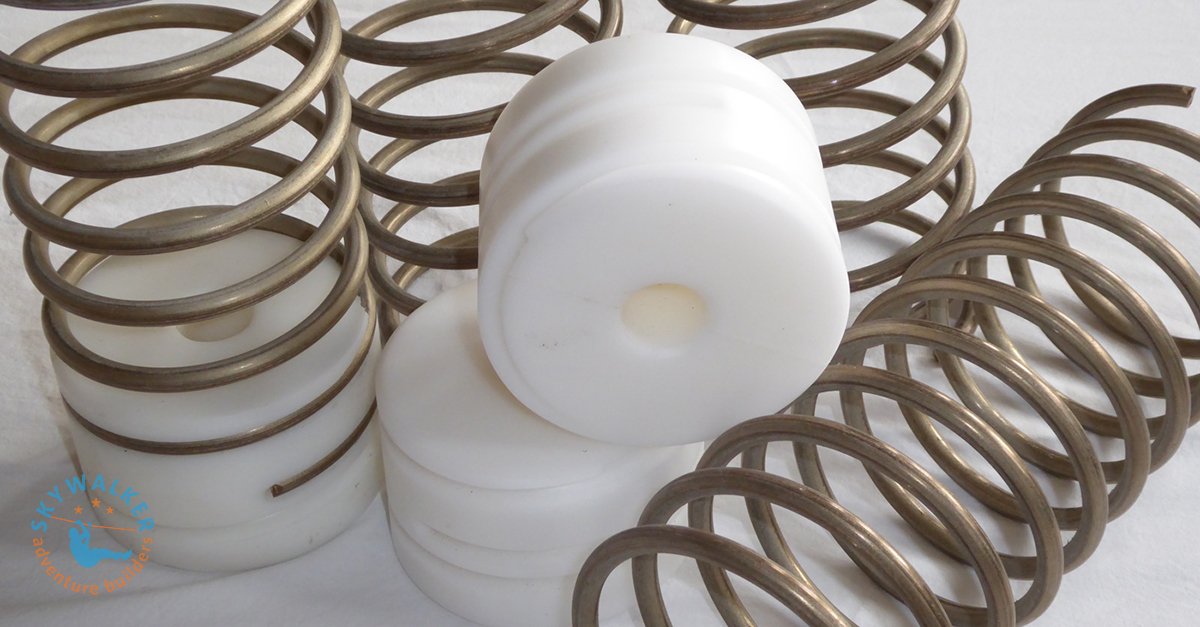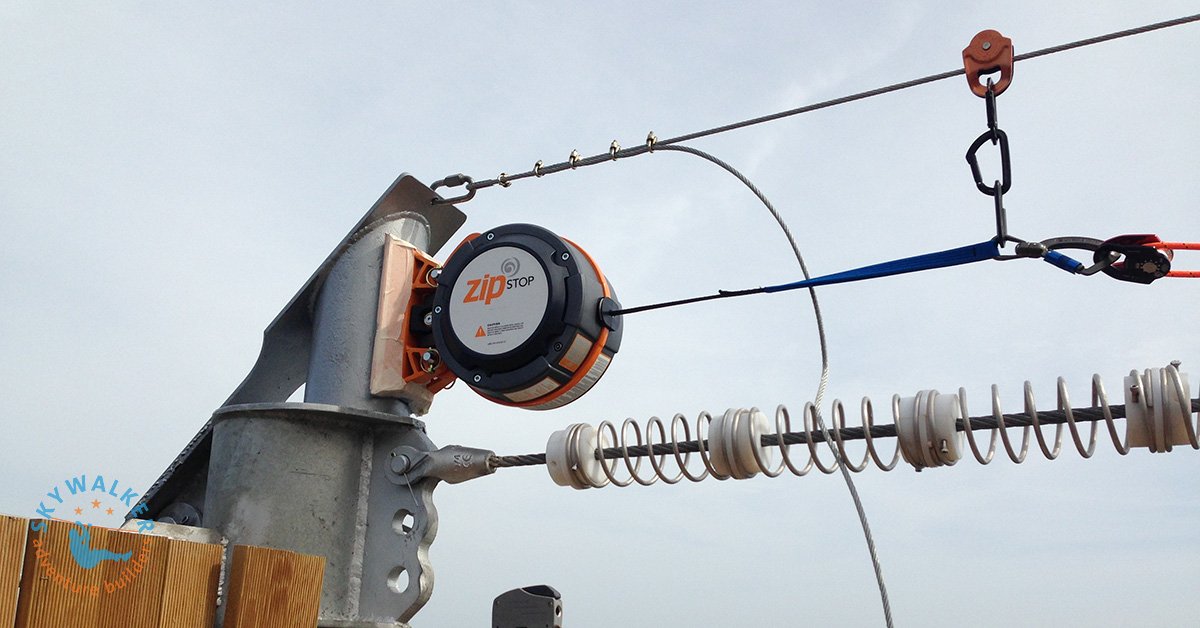Zip lining is an adventure sport that offers an exhilarating experience, but behind all the thrills lies a complex system of engineering and safety measures. One of the most critical components in ensuring a safe and smooth zip line ride is the braking system. Among the various braking technologies available, zipline spring brakes stand out for their reliability and simplicity. In this comprehensive guide, we’ll explore everything you need to know about zipline spring brakes, from how they work to their advantages, drawbacks, and maintenance requirements.
What Are Zipline Spring Brakes?
Zipline spring brakes are large metal coils designed to absorb the rider's momentum at the end of a zip line. When a rider reaches the end of the line, they impact the spring brake, which compresses to slow them down. Once the rider comes to a stop, the spring decompresses slightly, pushing them back a bit. This simple yet effective mechanism ensures that riders stop safely without abrupt force.
How Do Zipline Spring Brakes Work?
The working principle of zipline spring brakes is straightforward but highly efficient. As riders approach the end of the zip line at high speeds, they collide with the spring brake. The impact causes the metal coils to compress, absorbing kinetic energy and slowing down the rider. After reaching a full stop, the compressed spring expands slightly, pushing the rider back a few inches. While this rebound effect can be minimal for lighter riders, heavier individuals may experience a more significant bounce-back due to greater compression of the springs. This variability in braking experience is one of several factors that operators must consider when designing or maintaining zip line courses.
Advantages of Zipline Spring Brakes
Zipline spring brakes offer several benefits that make them a popular choice for both primary and secondary braking systems on zip lines.
1. Reliability
Spring brakes are incredibly reliable because they operate based on mechanical principles rather than electronics or hydraulics. They are designed with internal redundancies that ensure consistent performance even under high-stress conditions. Additionally, they automatically reset after each use, making them low-maintenance compared to other braking systems.
2. Cost-Effective
When used as part of a broader braking system, zipline spring brakes can be an affordable solution. They are often employed as secondary or emergency arrest devices (EADs), providing an extra layer of safety at a relatively low cost.
3. Simple Installation
Spring brakes are easy to install and maintain. They don’t require complex infrastructure or advanced technology, making them accessible for zip line operators who need a straightforward solution to ensure rider safety.
4. Durability
Designed for high speeds and significant impacts, professional-grade zipline spring brakes are built to last. They are made from robust materials like metal coils and plastic spacer blocks that can withstand repeated use without significant wear and tear.
Drawbacks of Zipline Spring Brakes
Despite their numerous advantages, zipline spring brakes come with certain limitations that operators should be aware of.
1. Space Requirements
One of the most significant drawbacks is the amount of space required for installation. Unlike other braking systems that can be moved along the cable or adjusted as needed, spring brakes are fixed in place. This means they require large platforms or detached terminal structures to accommodate their size.
2. Variable Braking Experience
The braking experience can vary significantly depending on factors like rider weight and environmental conditions such as wind speed or wet cables. Heavier riders tend to compress the springs more and experience a longer rebound compared to lighter riders who may come to an abrupt stop.
3. Impact on Throughput
The slight rebound effect after stopping can affect throughput—the number of riders who can go through a course in a given time period. Every second spent bouncing back at the end of the line is time lost that could be used for another rider’s turn.
Factors Affecting Braking Performance
Several factors influence how well a zipline spring brake performs in practice:
- Rider Weight: Heavier riders compress the springs more forcefully, leading to a longer rebound distance.
- Wind Speed: Headwinds slow down riders before they reach the brake, while tailwinds can speed them up.
- Cable Conditions: Wet cables from rain or dew can cause faster arrival speeds compared to dry cables.
These variables make it essential for operators to carefully design their courses and choose appropriate braking systems based on expected weather conditions and rider demographics.
Zipline Spring Brakes as Emergency Arrest Devices (EADs)
While zipline spring brakes may not always be ideal as primary braking systems due to space requirements and variable performance based on rider weight, they excel as emergency arrest devices (EADs). According to industry standards like those set by ACCT (Association for Challenge Course Technology), any zip line exceeding speeds of 6 mph (10 kph) must have an EAD in place.Spring packs—comprising multiple springs connected by plastic spacer blocks—are commonly used as EADs because they provide passive braking independent of the primary system. This redundancy ensures that even if the main brake fails, riders will still come to a controlled stop without risking serious injury or death.
Maintenance and Inspection
Though zipline spring brakes are relatively simple mechanical systems, regular inspection is crucial for ensuring long-term safety and performance. In certain environments—especially those prone to moisture—corrosion can become an issue over time. Operators should also check padding materials regularly since these degrade faster in harsh conditions. A full inspection should include:
- Checking for corrosion on metal components
- Inspecting padding for wear
- Ensuring springs compress and decompress smoothly
- Verifying proper alignment with other course elements
Given that access to some parts of the brake system may be limited due to their fixed position on large platforms or terminal structures, inspections can sometimes be challenging but are necessary for safety compliance.
Enhancing Customer Experience with Proper Design
Customer satisfaction is paramount in any adventure sport business, including zip lining operations. The design and placement of braking systems play a critical role in shaping customer experiences on your course. For instance:
- Heavier riders will have different experiences than lighter ones due to varying levels of spring compression.
- Environmental factors like wind speed or wet cables can further affect how smoothly riders stop.
By carefully considering these variables during course design—and possibly supplementing spring brakes with additional braking technologies—you can create a more consistent experience for all participants while also maximizing throughput efficiency.
Conclusion
Zipline spring brakes are essential components in ensuring both safety and efficiency on high-speed zip lines. While they may not always be ideal as primary braking systems due to space requirements and variability in performance based on rider weight, they excel as reliable emergency arrest devices (EADs). Their simplicity makes them easy to install and maintain while offering cost-effective solutions for operators looking to enhance their course's safety features. However, it's important for operators to regularly inspect these systems—especially in environments prone to corrosion—and consider how factors like rider weight or weather conditions might affect overall performance. By doing so, you can ensure smooth rides every time while keeping your customers safe and satisfied.
FAQs
1. What are the main components of a zipline spring brake?
The main components include large metal coils designed to absorb impact energy upon compression, plastic spacer blocks connecting multiple springs in packs, and sometimes progressive or fixed spring rates depending on design needs.
2. Can zipline spring brakes be used as primary braking systems?
While possible, they are generally better suited as secondary or emergency arrest devices due to space requirements and variable stopping experiences based on rider weight.
3. How often should I inspect my zipline spring brakes?
Regular inspections should occur frequently—especially if your course operates in environments prone to corrosion or extreme weather conditions—to ensure all components remain functional over time.
4. What factors influence how well my zipline spring brake works?
Rider weight plays one major role; heavier individuals compress springs more than lighter ones leading potentially longer rebounds after stopping fully at course ends along with environmental factors like wind speed/cable condition affecting arrival speeds too!
5: How do I improve throughput efficiency when using these types of breaks?
Consider combining additional technologies alongside traditional coil-based models such magnetic-based alternatives
Planning a zipline installation? Need expert advice on zipline design?
Get started Today
Additional expert Information regarding Zipline technology
Interested to read more about Zipline technology and expert opinions?
- The Power of Zip Line Simulation Software
- Bi-Directional Zip Line Technology
- Zip Line Design: Components for a Complete System
- How a Zipline Feasibility Study Guarantees Success
- MAG Brake Trolley, the Magnetic Self-braking Zipline pulley
- Professional Zipline Engineering & Design services
- How to Launch a Zip Line Company
- The Science of Zipline Design and Engineering
- Zipline Mistakes You Don’t Know You’re Making
- Key elements: Zipline Design and Engineering
- Thinking of investing and operating a Zipline?
- Zipline Emergency Arrest Devices (EADs)
- The ZipCoaster - Fly through the air, dipping and twisting
- Pros and Cons of Different Zip Line Brakes
- Expert Tips for Zip Line Brake Installations
- Thinking of investing and operating a Zipline?
- Ingenious inventions. The curvy zip line















